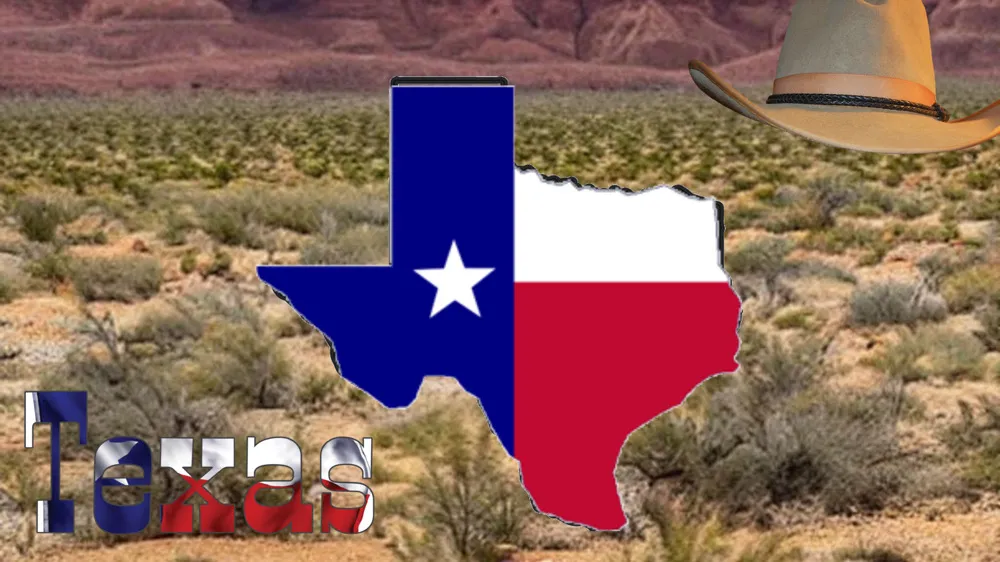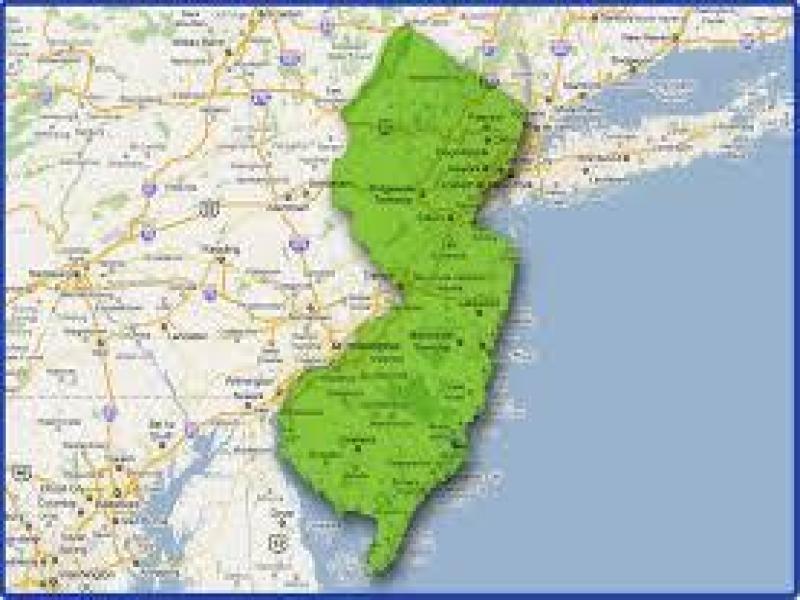
Welcome to the Texas Driver License Practice Test! This test contains 20 questions designed to help you prepare for your official Texas Driver License test. The questions in this test are based on the latest Texas Driver Manual and have been selected to cover a wide range of topics related to driving in Texas. Whether you're a new driver or just need a refresher, this practice test will provide you with valuable information and help you assess your knowledge of Texas driving laws and regulations. So let's get started and see how well you score on this Texas Driver License Practice Test!
The Texas driver license is an official document issued by the Texas Department of Public Safety (DPS) that allows residents to operate motor vehicles legally on public roads. Whether you're a new resident, a first-time driver, or someone seeking to renew a license, this guide will help you understand everything you need to know.
Driving in Texas
Driving in Texas requires knowledge of local traffic laws, speed limits, and road conditions. Texas is known for its wide highways and long-distance travel between cities, so it's important to maintain safe driving practices, including:
- Always wearing a seatbelt.
- Following speed limits posted on road signs.
- Yielding to pedestrians and emergency vehicles.
- Never driving under the influence of drugs or alcohol.
How to Get a Texas Driver License
- Determine Eligibility: You must be at least 16 years old and a Texas resident. If under 18, you’ll need to complete a driver education course and hold a learner license for at least six months.
- Gather Documents: Provide proof of identity, Social Security Number, U.S. citizenship or lawful presence, and Texas residency.
- Pass the Tests: These include a vision test, a written knowledge test, and a driving skills test (unless waived).
- Pay the Fees: The fee varies depending on age and license type. For example, a standard Class C license fee is $33 for most applicants.
- Receive Your License: You will receive a temporary license and the official one by mail within a few weeks.
Texas Driver License Point System
Texas uses a point system to track traffic violations. Points are added to your driving record when you're convicted of a moving violation.
Key Points:
- 2 points are added for a moving violation in Texas or any other state.
- 3 points are added for a moving violation that results in a crash.
- If you accumulate 6 or more points in 3 years, you may be required to pay a surcharge.
- Points remain on your record for 3 years from the date of the conviction.
Important Tips
- Keep your address updated with the DPS.
- Renew your license before it expires to avoid penalties.
- Consider taking a defensive driving course to remove points and get insurance discounts.
Conclusion
Having a valid Texas driver license is essential for legally operating a vehicle in the state. Always follow the rules of the road and stay informed about any updates from the Texas Department of Public Safety to maintain your driving privileges.
Welcome to the Texas Driver License Practice Test! This test contains 20 questions designed to help you prepare for your official Texas Driver License test. The questions in this test are based on the latest Texas Driver Manual and have been selected to cover a wide range of topics related to driving in Texas. Whether you're a new driver or just need a refresher, this practice test will provide you with valuable information and help you assess your knowledge of Texas driving laws and regulations. So let's get started and see how well you score on this Texas Driver License Practice Test!
Texas Driver License Test: Questions List
The following is a list of questions related to driving in Texas, sorted by each chapter of the Texas Driver Guide. These questions are designed to test your knowledge and understanding of road rules, traffic signals, vehicle maintenance, and other important aspects of driving in the state of Texas. Please note that this is a list of questions only and does not include answers.
Chapter 1
1. What is the minimum age at which you can get a Class C driver license without either driver education or being a hardship case?
2. How much is the maximum fine for a first conviction of driving without a license?
3. What type of restrictions may be placed on your license?
4. What action should you take if you fail to receive the renewal notice card reminding you that your driver license is about to expire?
5. When is it necessary to show proof of financial responsibility for the future, and how many years must such proof be kept up?
6. What qualifications must one have to teach a beginner to drive?
7. If the person is under 18, when does his provisional license expire?
8. To what agency and within what time period must a change of address be reported for driver licensing purposes?
9. What circumstances may lead to possible loss of your license?
10. What are the different classes of licenses and age requirements for each?
Chapter 2
1. Describe the equipment required on passenger cars by state law.
2. What is the purpose of an exhaust emission system?
3. What type of equipment is specifically forbidden on passenger cars driven within the state?
4. What is the maximum number of inches you may lawfully allow an object to extend beyond the left fender of your car?
Chapter 3
1. When are you required to show proof of financial responsibility?
2. How may one show proof of financial responsibility when needed?
Chapter 4
1. When parked parallel, your curb side wheels must be no more than how many inches from the curb?
2. When following another car, what is a good distance at which you should follow behind?
3. What should you do when coming onto a street from a private alley or driveway?
4. When two cars meet at the intersection of a two-lane road with a four-lane road, which one must yield the right-of-way?
5. If a child runs into the road 45 to 50 feet ahead of your car, what is the highest speed from which you can stop with good brakes without hitting him?
6. What should you do when a traffic officer tells you to do something that is ordinarily considered to be against the law?
7. What action should you take if you fail to receive the renewal notice card reminding you that your driver license is about to expire?
8. What circumstances may lead to possible loss of your license?
9. What should you do if you have a blowout while driving?
10. When are crash reports required?
11. What precautions should a driver take at uncontrolled intersections?
12. What should you do when driving down a steep grade in a car with standard transmission?
13. What should you do if you damage an unattended vehicle?
14. What is the penalty for being convicted of driving while intoxicated?
15. When are you required to show proof of financial responsibility?
16. How may one show proof of financial responsibility when needed?
17. What are the penalties for minors (persons under the age of 21) convicted of Driving Under the Influence of Alcohol?
18. What are the penalties for minors (persons under the age of 21) convicted of non-driving alcohol-related offenses?
Chapter 5
1. In what direction should you turn your wheels when parking uphill without a curb?
2. On a one-way street, what color is the broken lane marker?
3. Describe the “Yield” sign.
4. What does a “Narrow Bridge” sign look like, and how should the driver react when he sees one?
5. What is the shape of a “Keep Right” sign, and how should the driver react when he sees one?
6. Which sign tells you to slow down because you are approaching a double curve?
7. What does a “Do Not Pass” sign mean?
8. Which sign tells you to keep in the right-hand lane when driving slow?
9. What does “Yield Right-of-Way” mean?
10. What type of sign warns you to watch right and left for cross traffic?
11. Describe the emblem that identifies vehicles which travel at speeds of 25 mph or less.
12. What sign warns you that you must slow down?
13. What sign indicates that the road that you are on merges with another?
14. What kind of sign warns you that you should slow down for a sharp rise in the roadway?
15. Describe the sign that tells you to watch for cross traffic ahead.
16. What is the maximum speed limit for passenger cars on a Texas Highway numbered by this state or United States outside an urban district?
17. Under what conditions are overtaking and passing to the right not permitted?
18. When a driver is waiting to make a left turn, what is the procedure he should take when the light turns green?
19. What does a green arrow showing with a red light mean?
20. How should you react to a flashing red light?
21. Which sign tells you to watch out for a train?
22. Describe the sign that warns you to slow down for a winding road.
23. What sign tells you to slow down because you are approaching a double curve?
24. What is the maximum speed limit for passenger cars on a Texas Highway numbered by this state or United States outside an urban district?
Chapter 6
1. You should never drive on the left half of the roadway when you are within how many feet from an intersection, bridge, or railroad crossing?
2. What should you do if you discover you are in the wrong lane to make a turn as you enter an intersection?
3. Under what conditions should you never attempt to pass a car ahead of you?
Chapter 7
1. When parked parallel, your curb side wheels must be no more than how many inches from the curb?
2. Within how many feet of a crosswalk may you park, when parking near a corner?
3. How close to a fireplug may a vehicle lawfully park?
Chapter 8
1. About how many feet will the average driver going 50 mph travel from the moment he sees danger until he hits the brakes?
2. Once the brakes have been applied, about how many feet does a car which was going 70 mph travel before it comes to a stop?
3. When following another car, what is a good distance at which you should follow behind?
4. What does a posted speed limit of 55 mph mean?
5. Does a posted speed limit of 55 mph mean that you may drive 55 mph on that highway under all conditions?
6. What is the state speed limit for automobiles in urban districts?
7. You should never drive on the left half of the roadway when you are within how many feet from an intersection, bridge, or railroad crossing?
8. If a child runs into the road 45 to 50 feet ahead of your car, what is the highest speed from which you can stop with good brakes without hitting him?
Chapter 9
1. What should you do if you have a blowout while driving?
2. In which gear should you drive when going down a steep hill?
3. When are you required to show proof of financial responsibility?
4. How may one show proof of financial responsibility when needed?
5. At what time of the day should your headlights be turned on?
6. Under what conditions should headlights be used?
7. You should dim your lights when you are within how many feet of an approaching car?
8. What type of lighting should cars use when parked on the highway at night?
9. Which lights should you use when you are driving in a fog?
Chapter 10
1. What effects does the use of marijuana and amphetamine have on driving?
2. What is the penalty for being convicted of driving while intoxicated?
3. What are the penalties for minors (persons under the age of 21) convicted of Driving Under the Influence of Alcohol?
4. What are the penalties for minors (persons under the age of 21) convicted of non-driving alcohol-related offenses?
Chapter 11
1. When are crash reports required?
2. What should you do if you damage an unattended vehicle?
Chapter 13
1. What regulations should a bicycle rider observe?
2. What are the three most common motorist caused car-bicycle crashes?
3. What type of sign warns you

